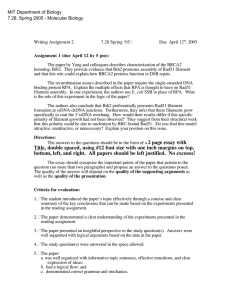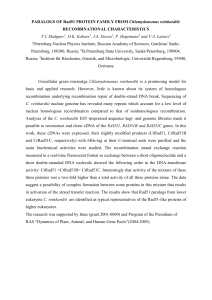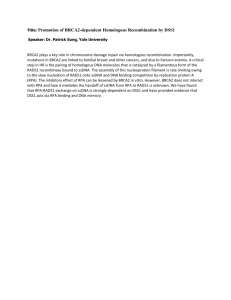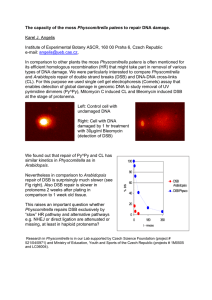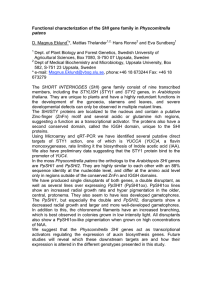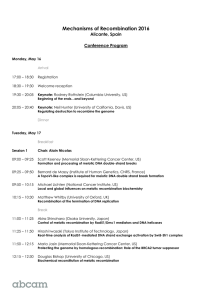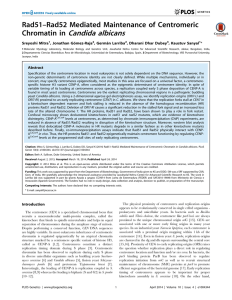RAD51 thaliana
advertisement
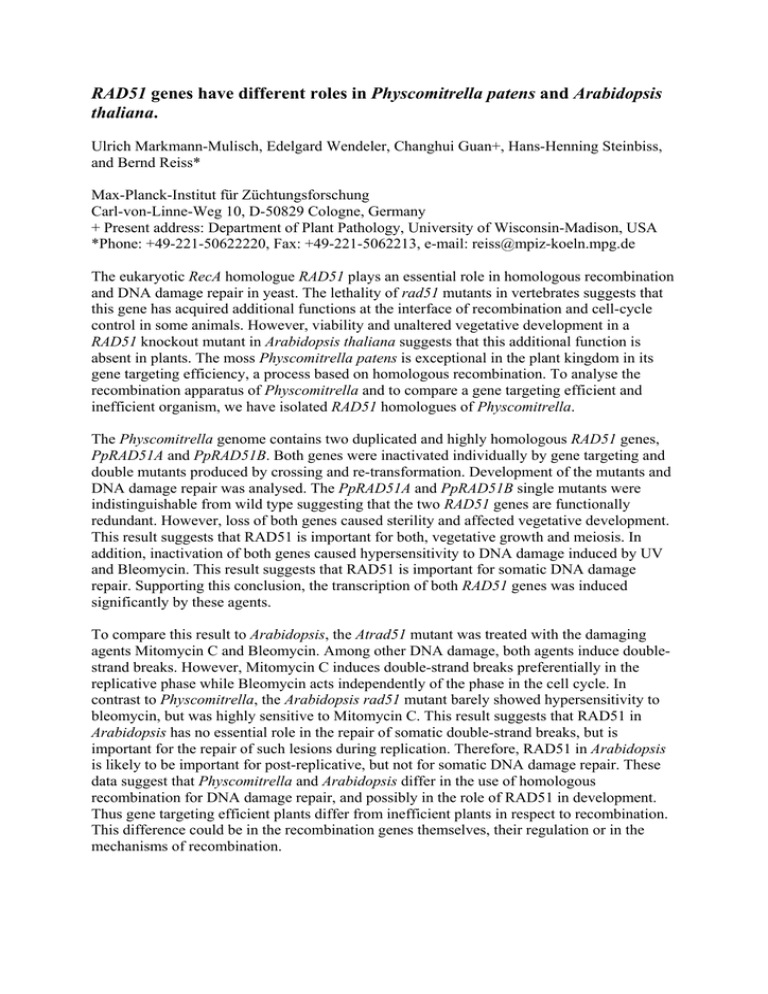
RAD51 genes have different roles in Physcomitrella patens and Arabidopsis thaliana. Ulrich Markmann-Mulisch, Edelgard Wendeler, Changhui Guan+, Hans-Henning Steinbiss, and Bernd Reiss* Max-Planck-Institut für Züchtungsforschung Carl-von-Linne-Weg 10, D-50829 Cologne, Germany + Present address: Department of Plant Pathology, University of Wisconsin-Madison, USA *Phone: +49-221-50622220, Fax: +49-221-5062213, e-mail: reiss@mpiz-koeln.mpg.de The eukaryotic RecA homologue RAD51 plays an essential role in homologous recombination and DNA damage repair in yeast. The lethality of rad51 mutants in vertebrates suggests that this gene has acquired additional functions at the interface of recombination and cell-cycle control in some animals. However, viability and unaltered vegetative development in a RAD51 knockout mutant in Arabidopsis thaliana suggests that this additional function is absent in plants. The moss Physcomitrella patens is exceptional in the plant kingdom in its gene targeting efficiency, a process based on homologous recombination. To analyse the recombination apparatus of Physcomitrella and to compare a gene targeting efficient and inefficient organism, we have isolated RAD51 homologues of Physcomitrella. The Physcomitrella genome contains two duplicated and highly homologous RAD51 genes, PpRAD51A and PpRAD51B. Both genes were inactivated individually by gene targeting and double mutants produced by crossing and re-transformation. Development of the mutants and DNA damage repair was analysed. The PpRAD51A and PpRAD51B single mutants were indistinguishable from wild type suggesting that the two RAD51 genes are functionally redundant. However, loss of both genes caused sterility and affected vegetative development. This result suggests that RAD51 is important for both, vegetative growth and meiosis. In addition, inactivation of both genes caused hypersensitivity to DNA damage induced by UV and Bleomycin. This result suggests that RAD51 is important for somatic DNA damage repair. Supporting this conclusion, the transcription of both RAD51 genes was induced significantly by these agents. To compare this result to Arabidopsis, the Atrad51 mutant was treated with the damaging agents Mitomycin C and Bleomycin. Among other DNA damage, both agents induce doublestrand breaks. However, Mitomycin C induces double-strand breaks preferentially in the replicative phase while Bleomycin acts independently of the phase in the cell cycle. In contrast to Physcomitrella, the Arabidopsis rad51 mutant barely showed hypersensitivity to bleomycin, but was highly sensitive to Mitomycin C. This result suggests that RAD51 in Arabidopsis has no essential role in the repair of somatic double-strand breaks, but is important for the repair of such lesions during replication. Therefore, RAD51 in Arabidopsis is likely to be important for post-replicative, but not for somatic DNA damage repair. These data suggest that Physcomitrella and Arabidopsis differ in the use of homologous recombination for DNA damage repair, and possibly in the role of RAD51 in development. Thus gene targeting efficient plants differ from inefficient plants in respect to recombination. This difference could be in the recombination genes themselves, their regulation or in the mechanisms of recombination.
